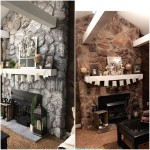Best Wood To Burn In Fireplace For Heat
Fireplaces offer a cozy and inviting ambiance, but their primary function is often to provide warmth. Selecting the right wood for your fireplace can significantly impact the heat output, burn time, and overall experience. Not all firewood is created equal, and certain species excel in producing a hot and long-lasting fire. This guide explores the best woods for burning in your fireplace, focusing on heat production, burn time, and other essential considerations.
Hardwoods for Maximum Heat
Hardwoods are generally denser than softwoods, making them the preferred choice for fireplace fuel. Their higher density translates to more energy content, resulting in a hotter and longer-lasting fire. Here are some of the top hardwoods to consider:
- Oak: A classic choice, oak produces a long-lasting and intensely hot fire. It's known for its pleasant aroma and readily available. However, oak tends to be more expensive.
- Maple: Similar to oak, maple produces a hot fire and burns cleanly. It also has a sweet, slightly smoky scent. Maple is a good alternative when oak is unavailable or priced higher.
- Hickory: Hickory is renowned for its very high heat output and long burn times. It's an excellent choice if you need a strong, sustained fire. However, hickory can produce a lot of embers, so it's essential to have a secure fire grate.
- Ash: Another popular hardwood, ash produces a good, consistent heat. It's known for its fast-burning nature and relatively consistent size. However, ash can produce a large amount of ash, leading to more cleanup.
- Cherry: Cherry wood is prized for its beautiful flames and pleasant aroma. It burns well and provides a good heat output, though it might not have the longest burn time.
Softwoods for Quick Fires
Softwoods, despite having a lower heat output and shorter burn time than hardwoods, can be suitable for specific situations. Softwoods are often less expensive and easier to find than hardwoods.
- Pine: Pine is a readily available and affordable option for starting a quick fire. It burns quickly and produces a lot of flames, making it ideal for getting a fire going. However, pine produces less heat than hardwoods and has a shorter burn time.
- Fir: Fir is another softwood that burns quickly and easily. It's often used in combination with hardwoods for a balanced fire. Fir has a pleasant fragrance but doesn't produce as much heat as hardwoods.
- Spruce: Spruce, similar to fir, burns quickly and produces a good amount of flames. It's generally a good choice for starting a fire, but its heat output and burn time are limited.
Considerations Beyond Just Heat
While heat output is crucial, other factors can influence your firewood selection:
Burn Time
The burn time of wood is directly related to its density. Hardwoods generally burn for longer periods than softwoods. If you need a fire that will last through the night, opt for denser woods like oak or hickory. Softwoods will likely need replenishing more frequently.
Smoke Production
Some woods produce more smoke than others. Oils and resins in certain woods can contribute to smoky fires. This is particularly relevant if you have a fireplace insert or wood-burning stove, where excessive smoke can be an issue. Woods like pine and fir tend to produce more smoke, while hardwoods like oak and maple burn cleaner.
Ash Production
The amount of ash produced by firewood varies. Some woods, like ash and hickory, leave behind significant amounts of ash, requiring more frequent cleaning. Woods like oak and maple produce less ash. Consider the ash production of your firewood, especially if you don't want to clean your fireplace constantly.
Availability and Cost
The availability and cost of firewood can vary significantly depending on your region. Hardwoods tend to be more expensive than softwoods. Research local suppliers and consider the cost-benefit ratio before making a decision.
Seasoning
Seasoned wood is crucial for a good fire. Freshly cut wood has a high moisture content, which results in smoky, inefficient fires. Seasoned firewood has been dried for at least six months to a year, reducing moisture and increasing burn time and heat output. Look for firewood with a moisture content of less than 20%. When buying firewood, check for signs of proper seasoning, including a pale color and a light, hollow sound when tapped.
By understanding the characteristics of different woods, you can select the right fuel for your fireplace and enjoy a warm, cozy fire that meets your needs. Remember, a well-maintained fireplace with correctly seasoned wood offers the optimal experience.

Best Firewood For Heating The Family Handyman

The Best And Worst Types Of Wood For Burning In Fireplace Bob Vila

The Best Wood Burning Fireplace Inserts Or Stoves Ecohome

Which Wood Dean Forge

The Best Wood Fireplaces Of 2024 Direct Learning Center

7 Wood Burning Fireplace Options To Heat Your Home

How To Build A Long Lasting Fire Fiveways Fires Stoves

Best Firewood Heat Values And Wood Burning Tips The Old Farmer S Almanac

Is Wood Stove Heat Right For Your Home Pros Cons Costs And More

How To Heat Your House With Just A Wood Burning Stove Chesneys








